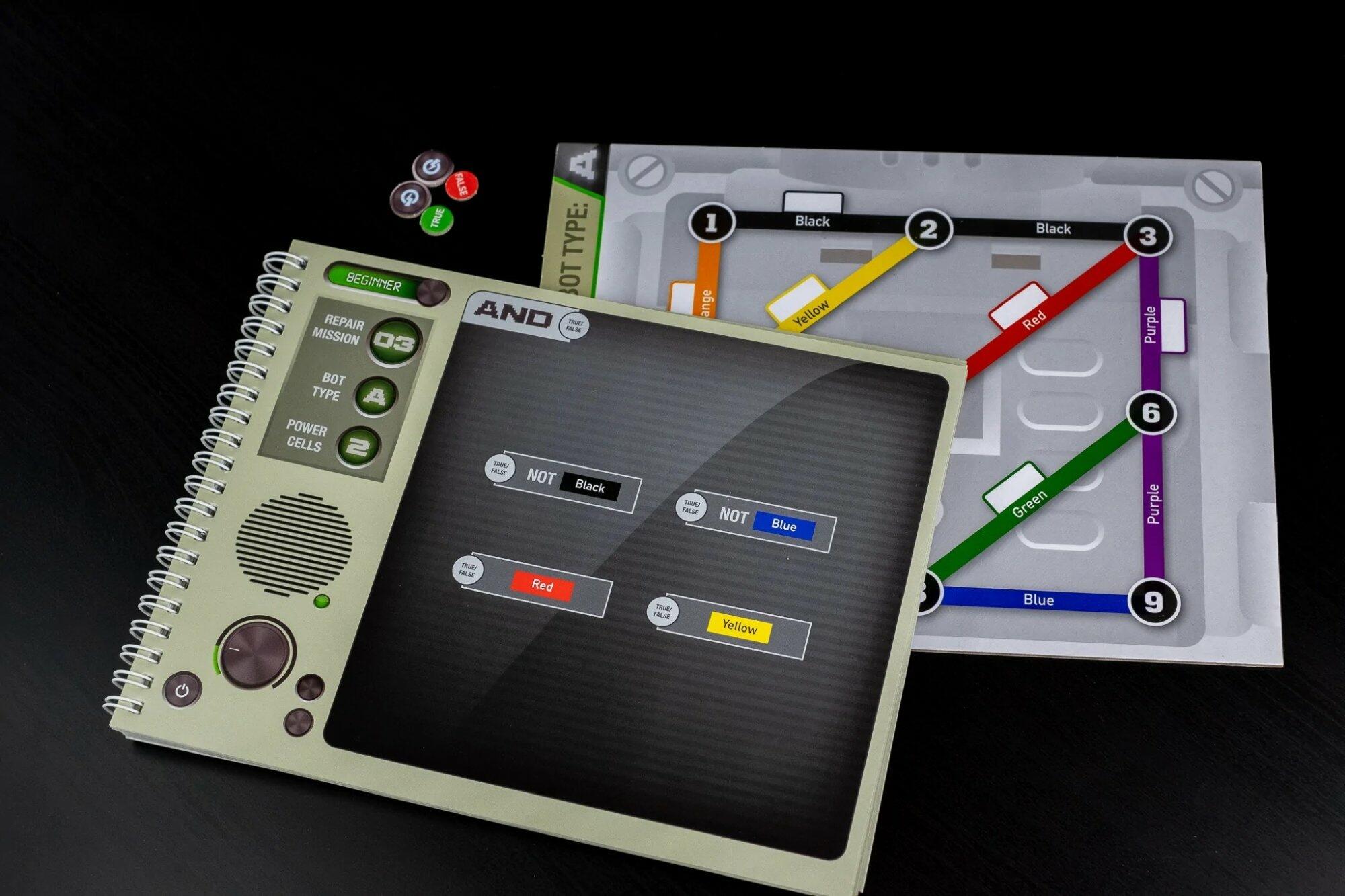
Robot Repair is a puzzle game created by Mark Engelberg and published by Thinkfun as part of their //Code series of games. The //Code games can be played solo or multiplayer and aim to teach programming concepts and boolean logic to children (or adults) aged 8 or older. We previously played, enjoyed, and reviewed Hacker by ThinkFun so when we saw Robot Repair we were eager to try it with our 8 year old son.
Boolean logic In A Box
Robot Repair comes with 40 challenges, with levels divided into beginner, intermediate, advanced, and expert. The selling points include “learn core coding concepts through hands-on game play,” and to “teach boolean logic through single or collaborative game play.” The packaging also suggests Robot Repair is a perfect game for Hour of Code.
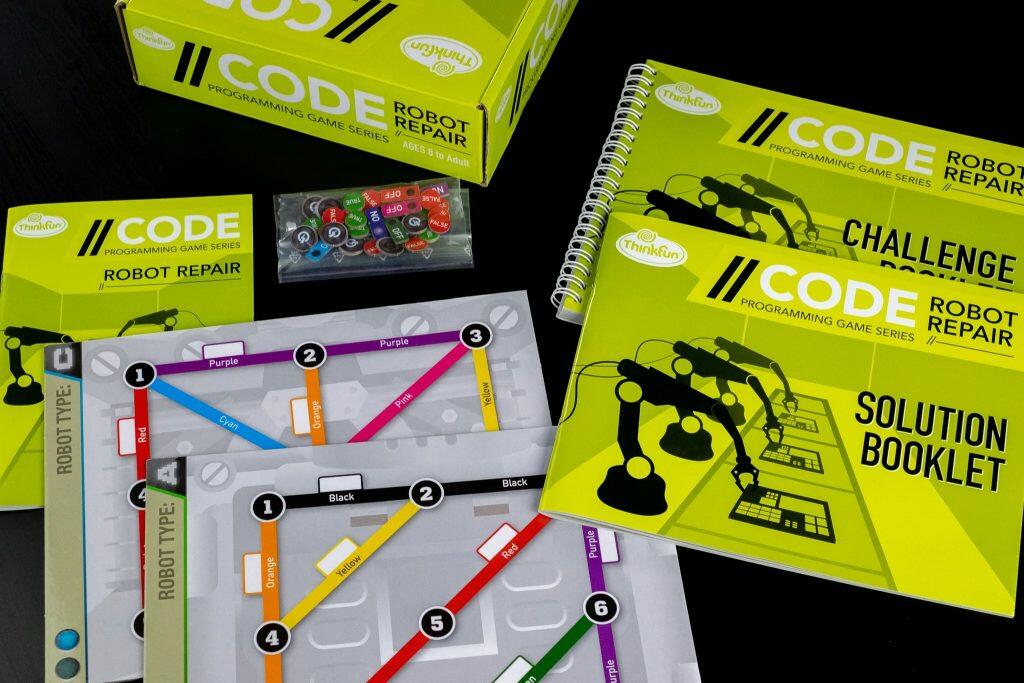
While taking inventory of all game components and pieces, the instruction manual for Robot Repair shows 4 circuit boards, when in reality there are only 2 double-sided boards. It is mildly confusing, but not a showstopper. The challenge booklet is made for durability. In contrast, the solution booklet a simple booklet without binding; it is not difficult to take an accidental glance at the solution for the next challenge on the neighboring page, though. Players, especially the young ones, will need to practice self-control from cheating. Game tokens are double-sided and made out of thick cardboard. They are a bit flimsy to handle and easy to lose. Consider using a small zip-lock bag to keep all the tokens together.
How To Play Robot Repair
Robot Repair is a deduction game. The challenge is to use boolean logic to deduce where to place “power cell tokens” to produce an outcome that will satisfy requirements as stated in the challenge booklet. If you have played other Thinkfun games before, Robot Repair follows very similar formula.
Boolean logic 101. Going into the game, you need to think of everything as either True or False. Between ON and OFF, on is true and off is false. Between Black and Not-Black, Black needs to be in ON mode, and Not-Black needs to be in OFF mode.
For every challenge in Robot Repair, you have a circuit board classified by bot type. And you give yourself the number of power cell tokens to solve the puzzle. Each challenge has a clue panel that contains a set of 2 to 6 clues that you must satisfy. Each clue has a set of 1 to 4 conditions you can use to manipulate outcome. While the Robot Repair may refer them as “clues”, think of them as “requirements”, or “rules”. But make no assumption that you are always looking for solution that will satisfy all rules — each clue panel has different perimeter for solution. The key is to recognize the type of panel at hand, and understand what each panel type means.
Panel Types
- AND panel means all requirements must meet
- OR panel means we only need to meet one out of all requirements
- XOR panel, stands for “exclusive or” means all requirements must be mutually exclusive, if one “clue” is true, the other “clue” must be false for XOR to be satisfied
- NOR panel, stands for “not or”, means all requirements must not meet for NOR to be satisfied
- NAND panel, stands for “not and”, is satisfied when at least one requirement is not met
- IFF panel, stands for “if and only if”, always has two requirements, and is satisfied when both requirements are simultaneously met or not met
Clues with only 1 condition are “simple clues”, as the outcome of the clue comes directly from the single condition. For instance, in a panel, one of the clues has a single condition “Not Black”. That clue is always true as long as black is not connected; or connecting the black to power cell will always render the clue as false.
Clues with multiple conditions will have a “clue type” specified. Concept clue type is identical to panel type, except it is applied toward conditions instead of clues. For instance, a clue has 2 conditions. First condition is “Yellow”, and second condition is “Black”. The clue type is OR. This means the clue is true when either yellow or black is connected; when both yellow and black are not connected, this clue is considered false.
Generally speaking, an OR panel with 2 simple clues may potentially be an easy one to solve, because you only need to satisfy 1 out of the 2 clues. An AND panel with 6 complex clues may potentially be a hard one to solve, because each of the 6 clues have multiple conditions to satisfy.
Technically Speaking
This is an excellent electrical engineering exercise for anyone interested in learning boolean logic. The language on the instruction manual may be a bit too technical for some younger players to understand. For instance, “NOT Green” means “Green = OFF”, and for players who are not used to thinking in boolean, it may not translate.
Logical deduction is the best part of the Robot Repair. It teaches you the meaning of AND, OR, XOR, NOR, NAND, and IFF, an excellent supplement to engineering 101.
In real world as a programmer, I have encounter countless business challenges involving boolean logic. Conceptually speaking, the “clues” in the games are highly similar to business requirements. As an example, let’s consider shopping online and using promo codes as a consumer:
Customers must purchase A and B to qualify for discount (AND)
This equates to “buy 1 get 1 free”, or “buy 1 and get 2nd half off”.
Customers receive discount when either A or B is purchased (OR)
This equates to “buy any product from Brand X and get $5 off”
STEM Experience with Boolean Logic
My 8-year-old was not interested in Robot Repair at first, because he was judging the game by the packaging, and the packaging did not look exciting to him. I made a comment that the game might be too advanced for him, suddenly he became very interested in solving boolean logic puzzles.
We started with challenge 1. I explained how to play the game using this first challenge as an example. I showed him how to apply boolean logic for deduction. We solved the challenge together; he learned the basic rules fairly quickly. The next one, challenge 2, he was on his own, and he solved it as quick as I did. I was surprised how quickly he conquered the game. Then we continued with two more challenges before he got bored and wanted to move on to other games.
As an 8 year old, he lasted 4 challenges total before he lost interest. The biggest takeaway was how natural it was for him to understand the boolean logic behind AND and OR; he started losing interest with IFF and XOR, and he stopped trying when we got to NOR and NAND. In my perspective, I thought it was a wonderful start for my 8-year-old — he learned boolean logic in 30 minutes simply from playing with Robot Repair! A true STEM experience.
If you’d like to buy //CODE Robot Repair and simultaneously support our site, please use this link.
Thank you for your support!
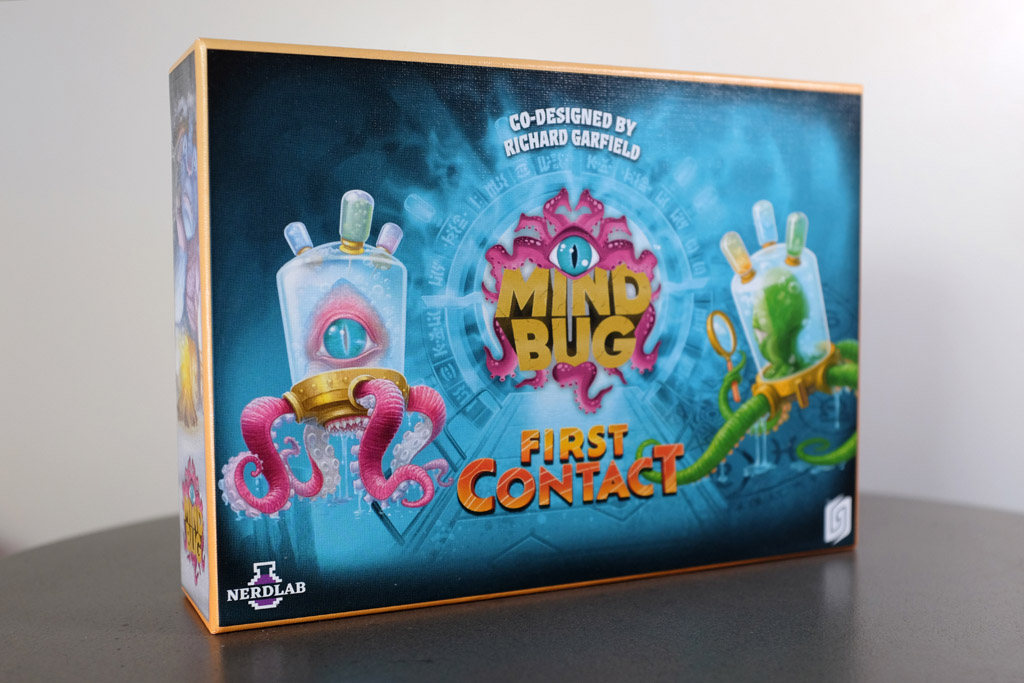
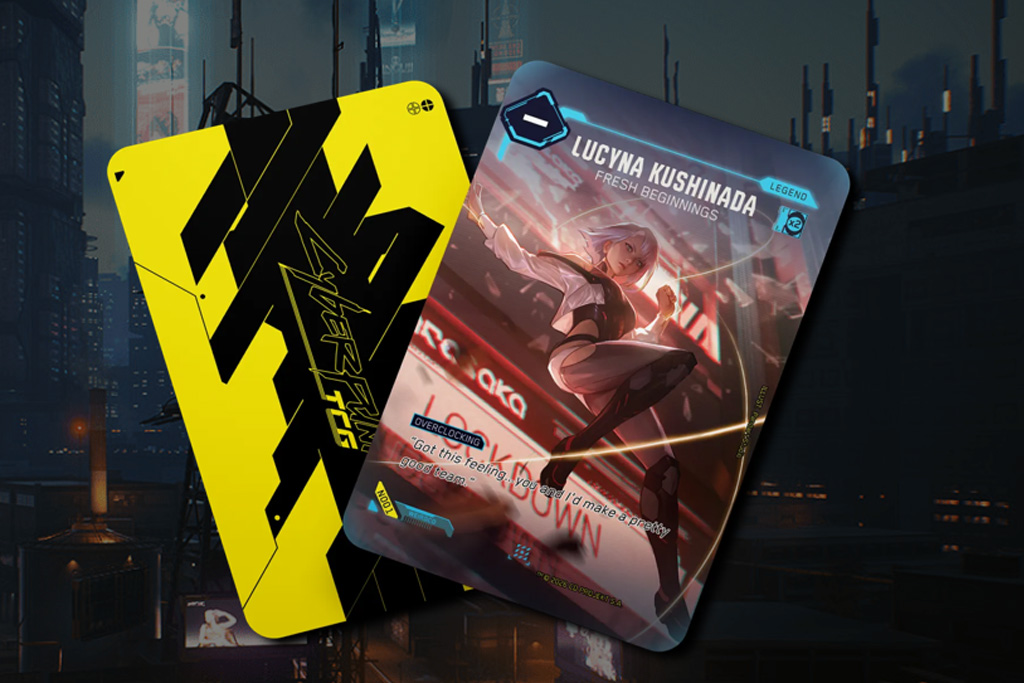

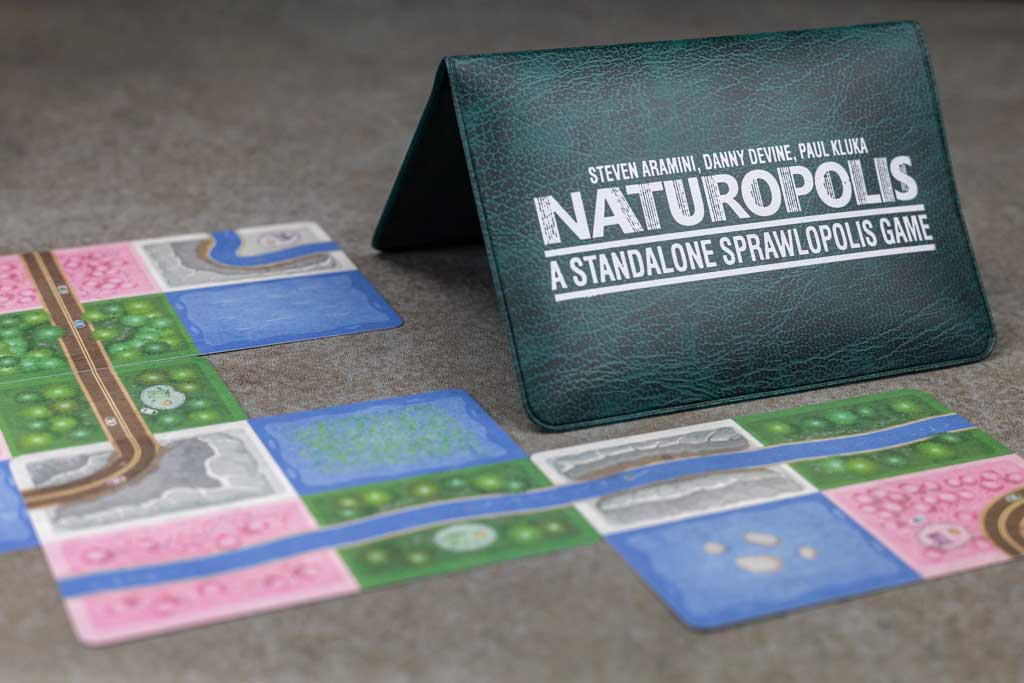
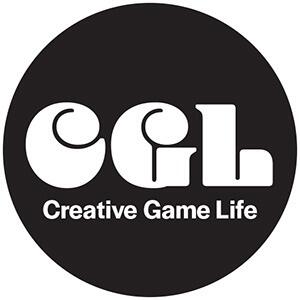
Pingback: Hacker: A Programming Puzzle | Creative Game Life